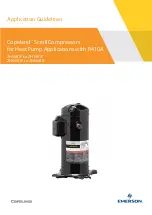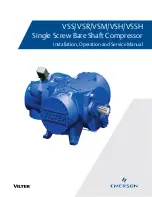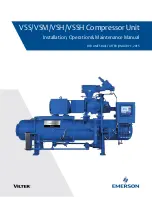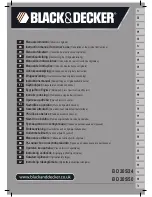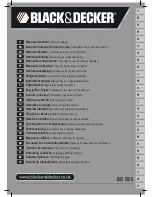
2
2. SAFETY GUIDELINES
DEFINITIONS
Safety symbols identify important safety messages that alert to the possibility of personal injury or death.
Review them carefully before operating the unit and before performing maintenance or repairs. Check the rules
and regulations at your location and identify possible hazards. The appropriate signal word for each message
has been selected using the following guidelines:
-
Danger indicates an immediate and specific hazard, which
will
result in
severe
personal
injury
or
death
if the proper precautions are not taken.
-
Warning indicates a specific hazard or unsafe practice, which
could
result in
severe
personal injury
or
death
if proper precautions are not taken.
- Caution indicates a potentially hazardous situation, which
may
result in
minor
or
moderate
injury
if proper practices are not taken.
____________________________________________________________________________
IMPORTANT SAFETY INSTRUCTIONS
Read and understand operator’s manual and all safety alerts before operating or maintaining your
Compressor. Be certain that everyone operating this equipment is familiar with the recommended operating
and maintenance procedures and follows all the safety precautions. Never let children or untrained adults
operate the machine.
_______________________________________________________________________________
RISK OF FIRE OR EXPLOSION
Spilled gasoline and its vapors can ignite from cigarette sparks, electrical arcing, exhaust gases, and hot engine
components such as the muffler. Never refuel the engine while it is hot or running. Move unit away from refueling
area before starting engine. Operate and fuel equipment in well-ventilated areas free from obstructions.
RISK OF BURSTING
Air under pressure will cause injury, death or property damage. Do not exceed pressure rating. Safety relief valve
settings must not be changed, check regularly for proper operation. Do not weld, drill or modify compressor tank; it
can severely impair tank strength and cause extremely hazardous conditions. Any adjustment to the tank by the user
will void the warranty.
RISK OF INJURY
Do not operate with belt guard removed. Wait for all moving parts to stop before taking belt guard off for compressor
servicing. Belt guard must be fastened in place before starting the compressor.
RISK OF BURNS
High temperatures are generated by the operation of the compressor. Contact with hot surfaces, such as the pump,
discharge hose and engine exhaust components could result in a serious burn. Allow them to cool off before
handling or servicing. Keep children away from the compressor at all times.
RISK TO BREATHING
Do not operate equipment in an enclosed area. Engine exhaust contains carbon monoxide, an odorless, colorless,
deadly poison. Never directly inhale compressed air produced by a compressor. It is not suitable for breathing
purposes. Read all labels when you are spraying paints or toxic chemicals and follow the safety instructions.
RISK OF HEARING AND EYE INJURY
Always wear hearing protection and approved safety goggles when using an air compressor. Failure to do so may
result in hearing loss and serious injury.
Summary of Contents for 11G-2-30H
Page 6: ...6 Figure 3 Compressor Air System...
Page 17: ...17...
Page 30: ...30 8 PUMP PARTS LIST PUMP 10002222 LP205CT USED ON ITEM 8041212...
Page 31: ...31 PUMP 10002222 LP205CT USED ON ITEM 8041212...
Page 32: ...32 PUMP 10002469 LP335SK USED ON ITEM 8120255...
Page 33: ...33 PUMP 10002469 LP335SK USED ON ITEM 8120255...
Page 34: ...34 PUMP 10001977 LPW6548ALHI USED ON ITEMS 8048530 8077513...
Page 35: ...35 PUMP 10001977 LPW6548ALHI USED ON ITEMS 8048530 8077513...
Page 36: ...36 PUMP 10003075 LPSS7550 USED ON ITEM 8120271...
Page 37: ...37 PUMP 10003075 LPSS7550 USED ON ITEM 8120271...
Page 38: ...38 PUMP 10002335 LPV6546ALHI USED ON ITEM 8057739...
Page 39: ...39 PUMP 10002335 LPV6546ALHI USED ON ITEM 8057739...
























